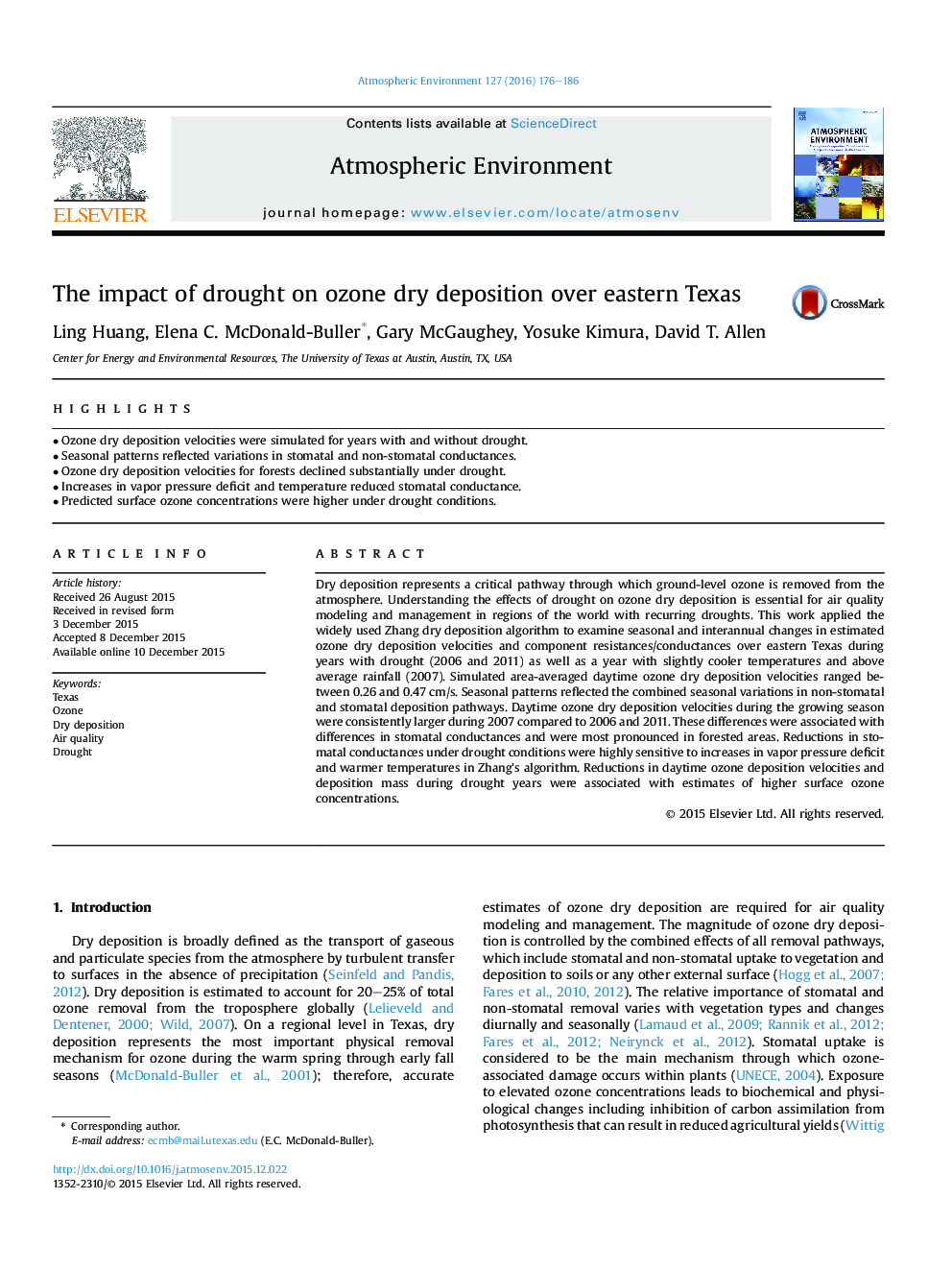| Article ID | Journal | Published Year | Pages | File Type |
|---|---|---|---|---|
| 6336879 | Atmospheric Environment | 2016 | 11 Pages |
Abstract
Dry deposition represents a critical pathway through which ground-level ozone is removed from the atmosphere. Understanding the effects of drought on ozone dry deposition is essential for air quality modeling and management in regions of the world with recurring droughts. This work applied the widely used Zhang dry deposition algorithm to examine seasonal and interannual changes in estimated ozone dry deposition velocities and component resistances/conductances over eastern Texas during years with drought (2006 and 2011) as well as a year with slightly cooler temperatures and above average rainfall (2007). Simulated area-averaged daytime ozone dry deposition velocities ranged between 0.26 and 0.47Â cm/s. Seasonal patterns reflected the combined seasonal variations in non-stomatal and stomatal deposition pathways. Daytime ozone dry deposition velocities during the growing season were consistently larger during 2007 compared to 2006 and 2011. These differences were associated with differences in stomatal conductances and were most pronounced in forested areas. Reductions in stomatal conductances under drought conditions were highly sensitive to increases in vapor pressure deficit and warmer temperatures in Zhang's algorithm. Reductions in daytime ozone deposition velocities and deposition mass during drought years were associated with estimates of higher surface ozone concentrations.
Related Topics
Physical Sciences and Engineering
Earth and Planetary Sciences
Atmospheric Science
Authors
Ling Huang, Elena C. McDonald-Buller, Gary McGaughey, Yosuke Kimura, David T. Allen,
